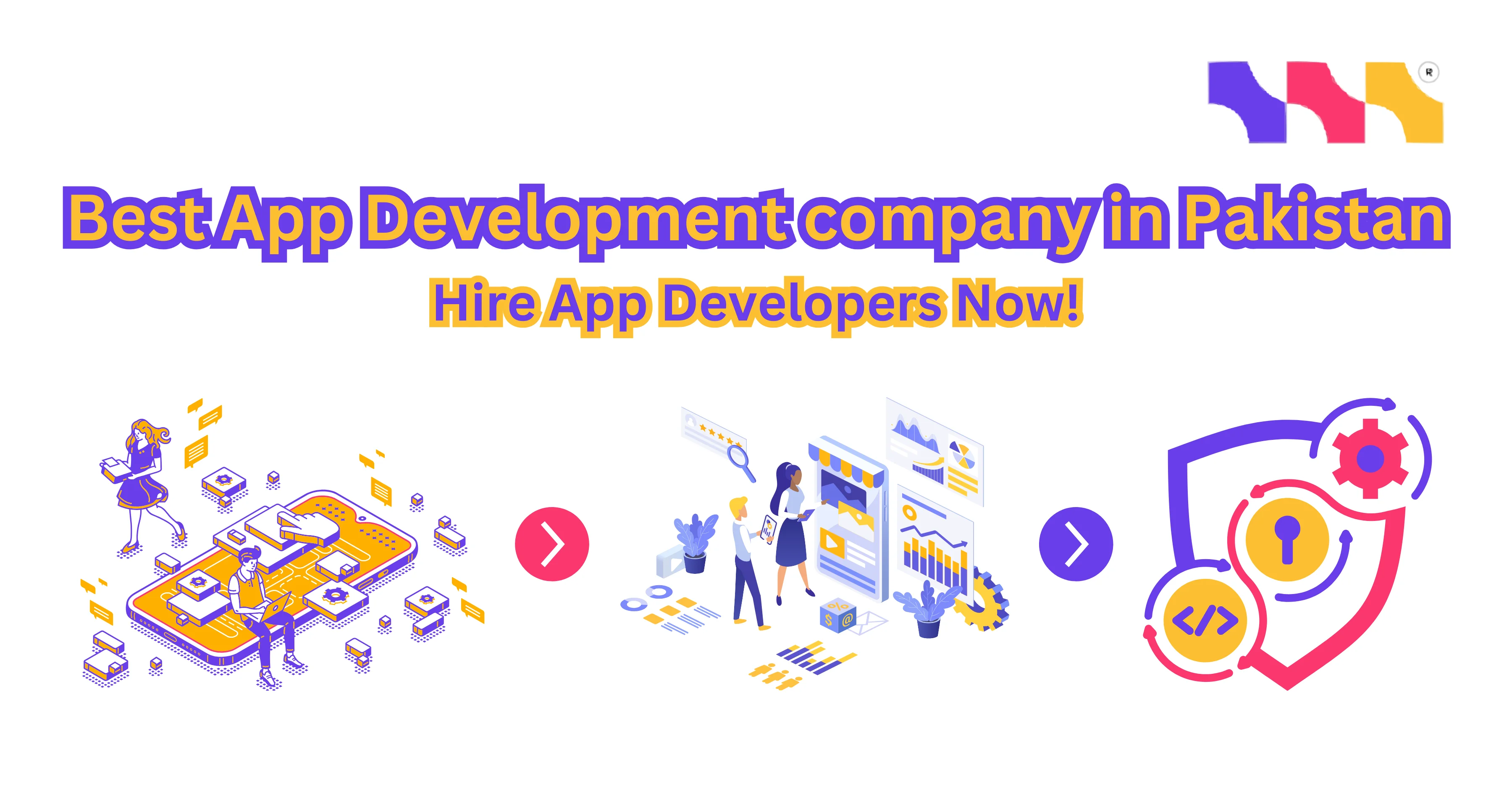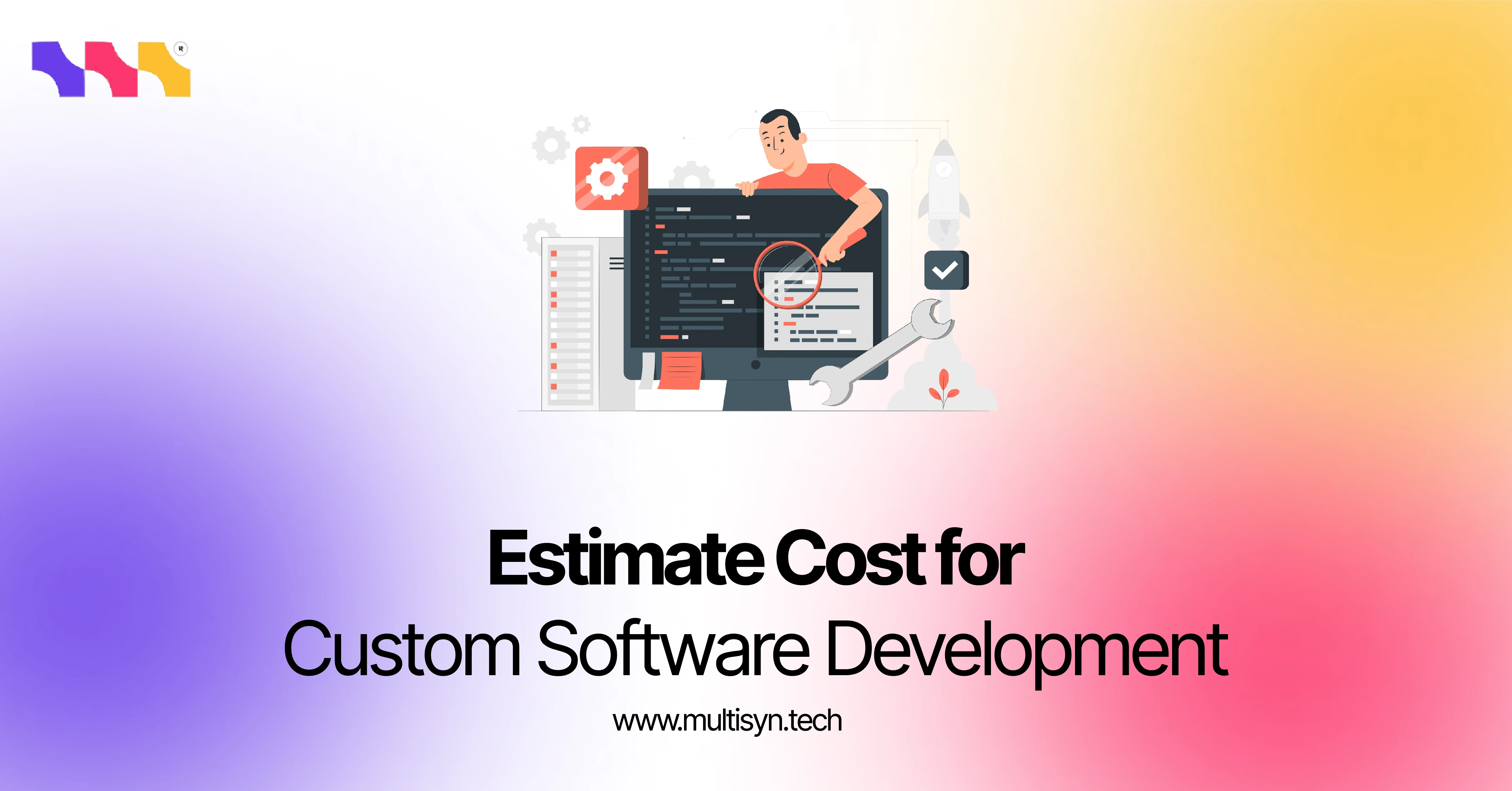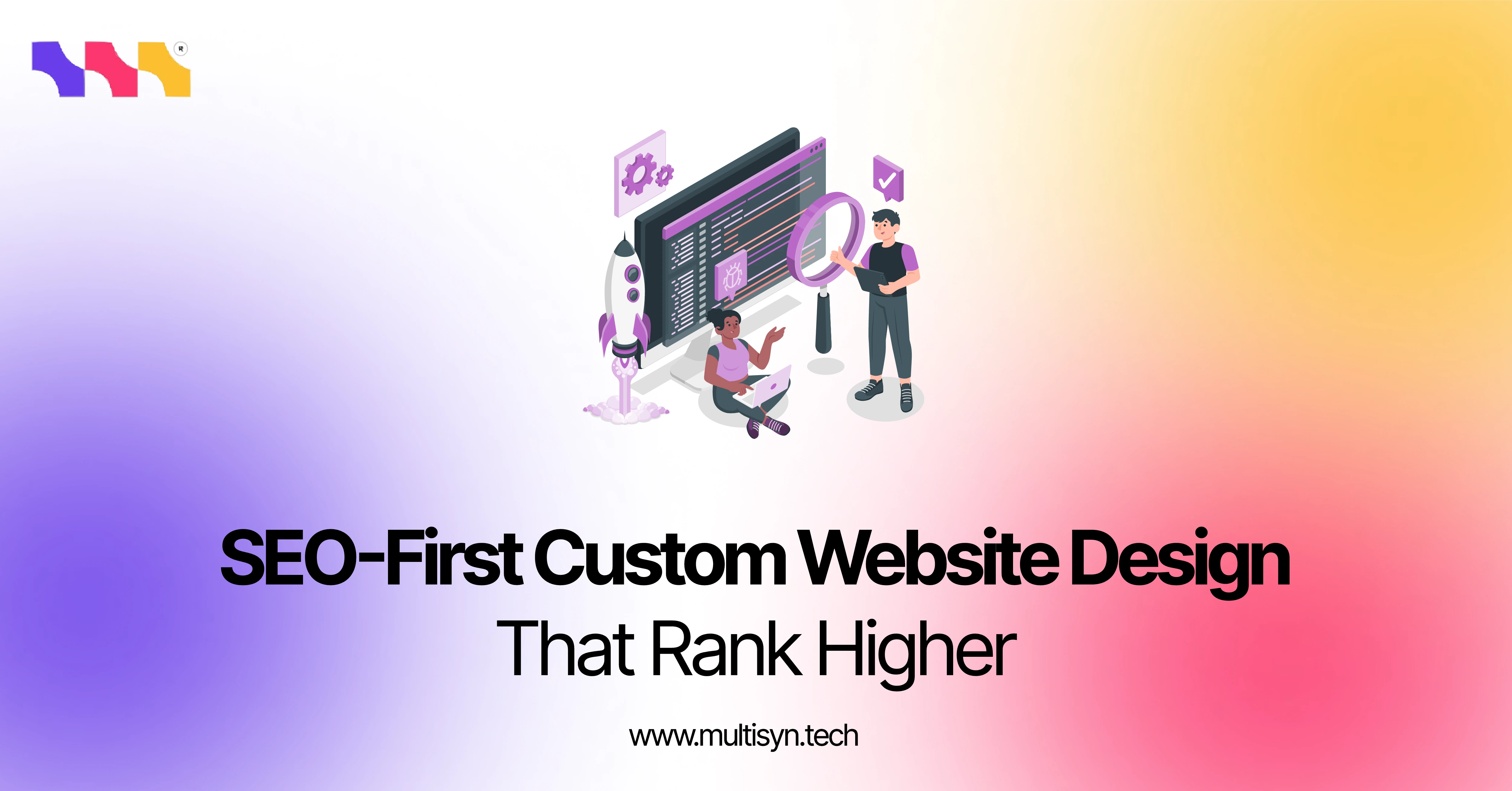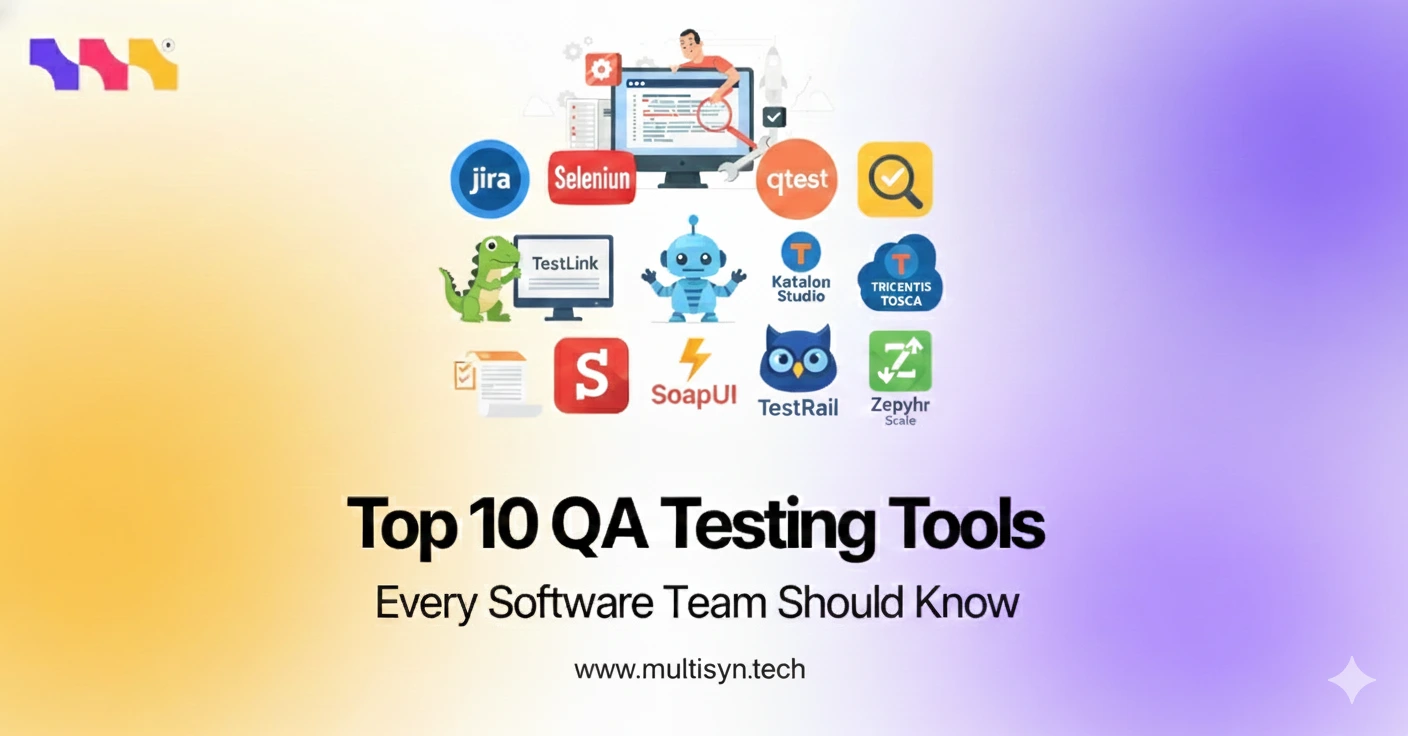 and Multi Page Application (MPA), highlighting a single web interface for SPA versus multiple pages for MPA, with a VS symbol in the center.webp)
Multisyn Tech Pakistan’s premier software development firm delivers rapid MVP development, high‑performance web and mobile apps, cloud‑native SaaS products, and scalable custom software. Our agile teams validate, build, and optimize your idea fast with expert UI/UX, QA, and DevOps, so you launch sooner and grow faster.
Introduction
Single Page Applications (SPA) and Multi Page Applications (MPA) differ in how they deliver content and handle user experience.
SPA loads a single page and updates content dynamically, making it faster and smoother for users but more complex for SEO unless combined with Server-Side Rendering (SSR).
MPA, on the other hand, loads a new page for each request, offering stronger SEO performance and scalability for content-heavy websites.
Choosing between SPA and MPA depends on your project goals—whether you prioritize speed and interactivity, or SEO visibility and structured scalability.
SPA: Features and Benefits
The Single-Page Application (SPA) platform dynamically delivers page content through a single webpage interface that avoids complete page reloads. SPAs function through client-side rendering (CSR), which depends on frameworks such as React, Angular, and Vue.js.
Dynamic User Experience
SPAs offer a dynamic user experience by loading specific data in real time, ensuring smooth interactions
App-Like Functionality
SPAs provide an app-like experience with minimal page refreshes, making them user-friendly and responsive.
Reduced Server Load
The browser handles most application tasks through SPAs, which reduces the server workload and increases performance.
MPA: Features and Advantages
The Multi-Page Application (MPA) format displays content across numerous pages, demanding a full reload between each transition. MPAs' server-side rendering technology enables them to handle websites that need detailed content and advanced functionality.
Multiple Pages for Content
MPAs' individual pages serve dedicated purposes, making them the perfect choice for large websites that feature diverse content, such as eCommerce stores and blogs.
SEO Optimization
MPAs leverage server-rendered content, making them more SEO-friendly and easily indexable by search engines. Search engines can easily access and index their content, thus improving visibility.
Highly Scalable
MPAs' scalability and efficiency grow with your business because they support complex requirements across multiple pages.
SPA vs. MPA: Key Differences
When deciding a difference between SPAs and MPAs, it's essential to understand their key differences to choose the right solution for your business.
Rendering Approach
SPAs' client-side rendering technique lets users load dynamic data, while MPAs need server-side rendering to refresh complete pages each time users interact.
Navigation Style
Single-page applications (SPAs) deliver an app-like interface that maintains continuous navigation without requiring full-page reloads, but Multi-Page Applications (MPAs) provide standard web navigation through repeated page reloading.
SEO Friendliness
Server-rendered pages are more popular with search engines because they can easily index them, but SPAs need additional tools like SSR or SSG for similar indexing success.
Use Cases
Dashboards' dynamic needs match SPAs perfectly, while MPAs work best for content-rich websites such as blogs and online stores.
Single Page Application (SPA) Architecture
Single Page Application Architecture relies on client-side rendering, enabling frameworks like React, Angular, and Vue.js to fetch and dynamically display content.
Dynamic Routing
Dynamic routing in SPAs ensures content loads without a page refresh, delivering an optimal user experience.
API-Driven Design
SPAs retrieve and modify data through APIs, enabling minimal information exchange between client systems and server infrastructure.
Single HTML Page
SPAs use only a single HTML page to dynamically display content through script injections, reducing page loading time and boosting site performance.
Single Page Application Example
Here’s a Single Page Application example to illustrate its dynamic functionality and responsive performance: Gmail provides real-time inbox updates, avoiding page reloads. Similarly, Google Maps delivers interactive exploration, and Trello offers drag-and-drop project management.
Gmail
The system implements real-time inbox updates through dynamic page sections to avoid complete page reloads.
Google Maps
Through this system, users can experience interactive map exploration without enduring frequent page reloads.
Trello
This project management platform allows users to update content using its drag-and-drop interface while providing real-time updates on one screen.
Multi-Page Application Framework
A Multi Page Application Framework plays a crucial role in building durable MPAs tailored to your business needs.
Django
The Python-based framework enables developers to construct secure multiple-page applications while scaling their operations.
Laravel
This PHP-based framework delivers advanced functionality while providing excellent capabilities for building complex multifunctional websites.
NET
The Microsoft framework delivers solutions for building enterprise-grade MPAs with demanding requirements across extensive content collections.
Multi-Page Application Example
The MPA framework fits websites with sophisticated content structures and extensive page organisation.
Amazon
Amazon is a web application platform with multiple pages that enable users to access product categories, product details, and account management pages.
WordPress Blogs
The content-heavy website design includes structured navigation through articles, categories, and website tags.
eBay
The website serves as a major online auction marketplace and shopping destination, featuring distinct pages for products, seller accounts, and search outcome displays.
Best Framework for Multi-Page Application
A strong framework selection for MPA development results in more efficient platforms that scale well.
Ruby on Rails
The framework enables developers to construct platforms that support heavy content and need quick development alongside customization capabilities.
Spring Boot
The Java-based framework produces enterprise-level MPAs which combine strong backend implementation capabilities.
Flask
The slender Python platform works well for developing compact MPAs that demand optimized development paths.
SPA vs MPA: Which Solution Fits Your Business?
Your decision between SPA and MPA should align with your business needs and how your audience interacts with your goals.
Choose SPA if:
A quick application-like experience with reactive user interactions makes SPA suitable for dashboards, social networks, or SaaS applications.
Choose MPA if:
the website contains extensive content and SEO demands attention while requiring flexible growth capabilities for massive platforms, including blogs and e-commerce platforms.
Why Choose Multisyn Tech?
Our team at Multisyn Tech combines SPA and MPA development knowledge to build web applications that match individual business requirements.
Expertise in Frameworks
Our team masters React and Angular for SPAs and Django and Laravel for MPAs, and it is also an expert in modern technology frameworks.
SEO Optimization
We optimize your application for maximum visibility and performance regardless of your web architecture.
Tailored Solutions
We develop applications which scale across multiple tiers while ensuring security and utilizing designs that match your business objectives.
Conclusion
Business success depends on understanding the fundamental differences between Single-Page Applications (SPA) and Multi-Page Applications (MPA). While SPAs are defined by speed and interactivity, MPAs deliver advantages in scalability and enhanced SEO capabilities.
Multisyn Tech provides advanced development solutions that help businesses access the capabilities of Single-Page and Multi-Page Applications. Our team awaits your call to build web applications that deliver results and improve user engagement.
FIND US:
Multisyn Tech Pakistan’s premier software development firm delivers rapid MVP development, high‑performance web and mobile apps, cloud‑native SaaS products, and scalable custom software. Our agile teams validate, build, and optimize your idea fast with expert UI/UX, QA, and DevOps, so you launch sooner and grow faster.
Related Blogs
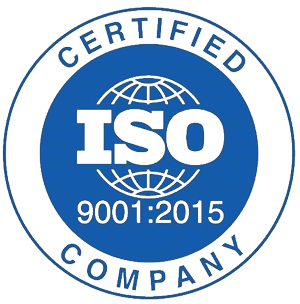
© 2025 MULTISYN TECH
